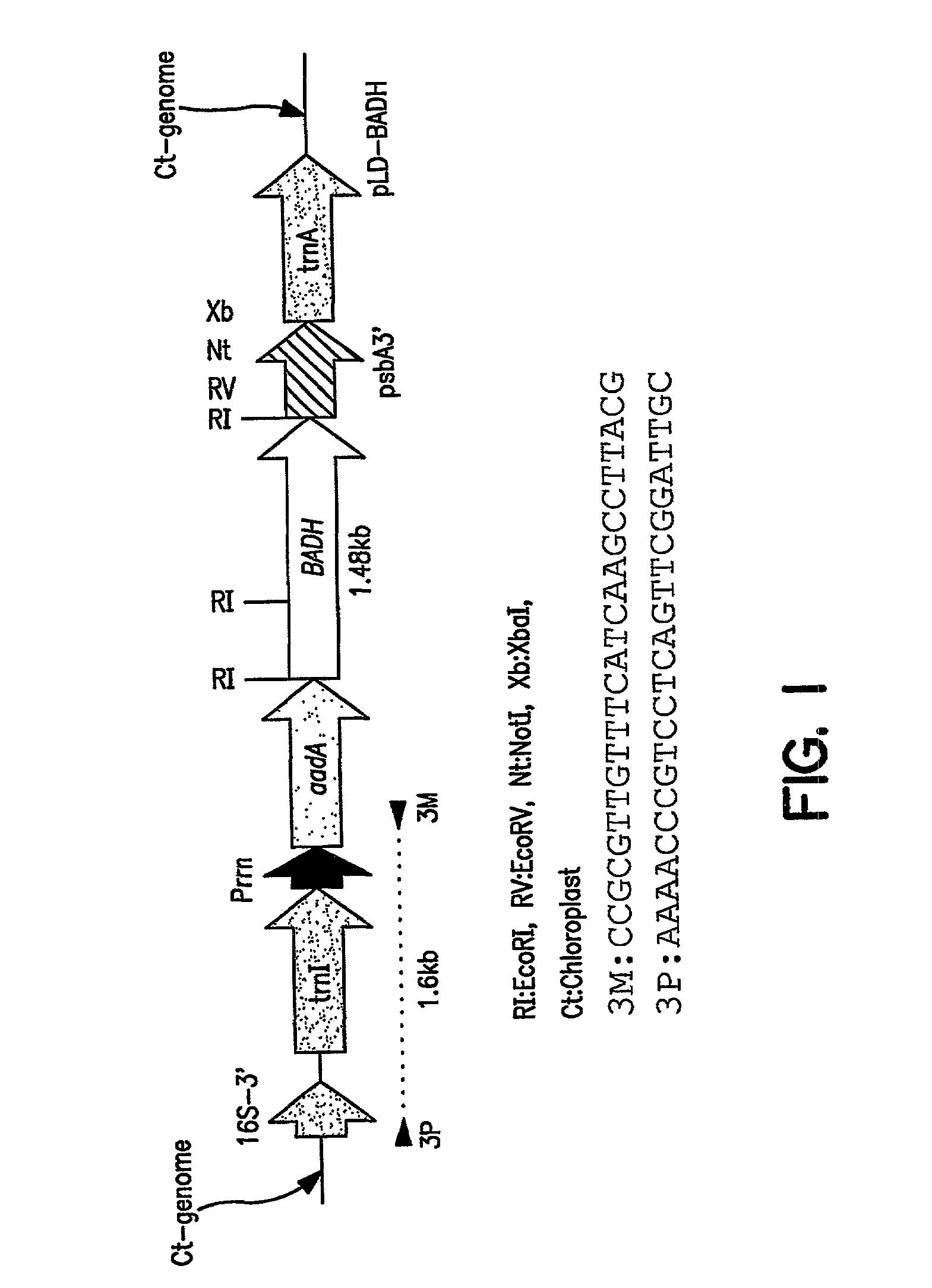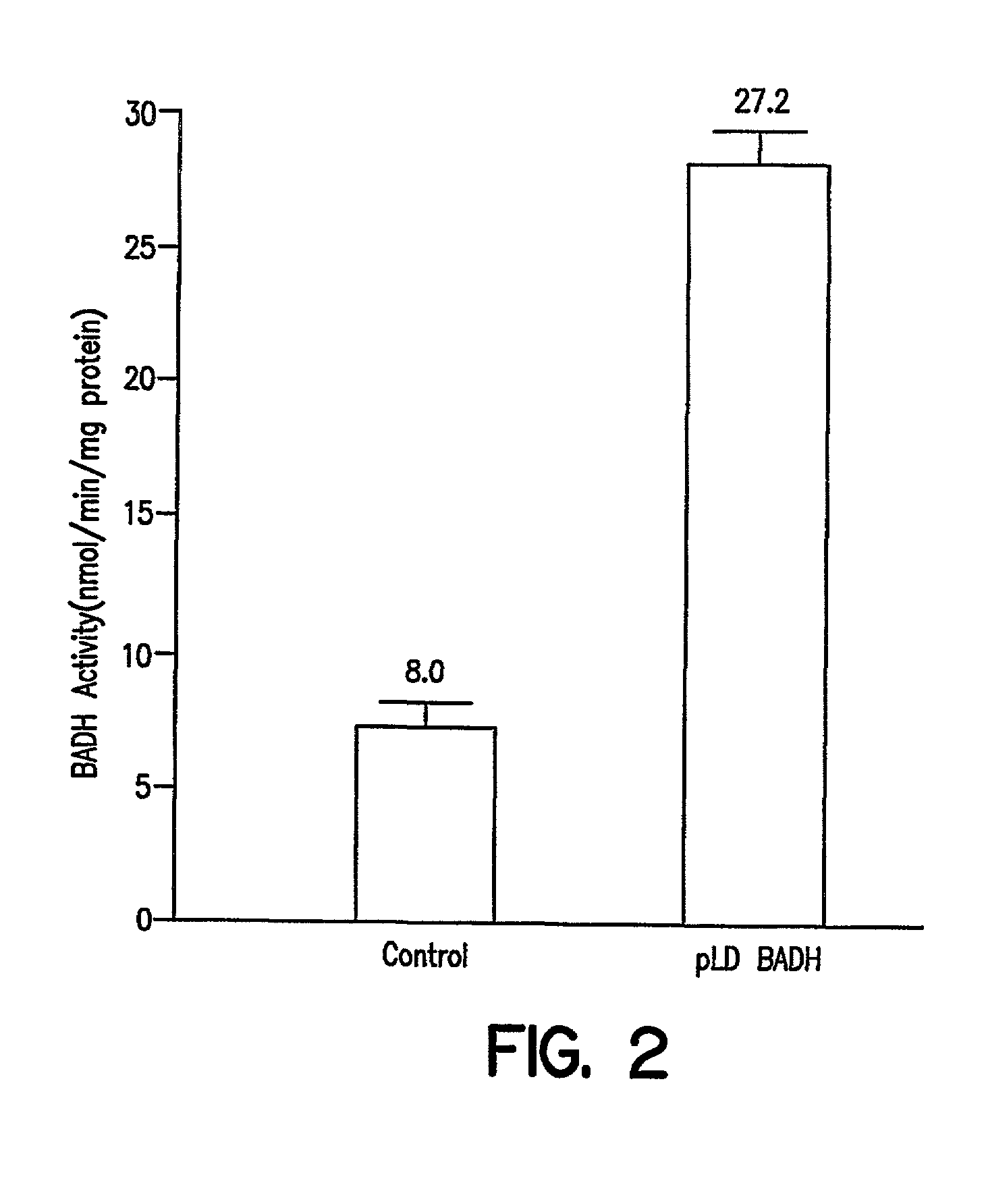Marker free transgenic plants engineering the chloroplast genome without the use of antibiotic selection
a technology of transgenic plants and chloroplasts, applied in the direction of oxidoreductases, biochemistry apparatus and processes, fermentation, etc., can solve the problems of reducing the european market of canadian organic farmers, bt resistance genes serve no useful purpose, and several lawsuits, so as to increase the risk of pests developing bt resistance, reduce bt resistance development, and increase bt expression levels
- Summary
- Abstract
- Description
- Claims
- Application Information
AI Technical Summary
Benefits of technology
Problems solved by technology
Method used
Image
Examples
example 2
[0095] Other antibiotic-free phytotoxic agents include phytotoxic aldehydes such as acetaldehyde, formaldehyde, proprionaldehyde, and butyraldehyde; herbicides such as triazines and cyanamide, including those listed in Molecular Biotechnology by Glick and Pasternak, page 459, Table 18.4. Also useful is light selection.
example 3
[0096] Other Genes of interest may be isolated from other organisms such as Sugar Beet and E. Coli.
example 4
[0097] Other Promoters can be used to drive expression of the genes, including the psbA promoter, the accD promoter, the 16SrRNA promoter, and those listed in U.S. Pat. No. 5,693,507 and International Publication No. WO99 / 10513, both to Daniell.
PUM
 Login to View More
Login to View More Abstract
Description
Claims
Application Information
 Login to View More
Login to View More - R&D
- Intellectual Property
- Life Sciences
- Materials
- Tech Scout
- Unparalleled Data Quality
- Higher Quality Content
- 60% Fewer Hallucinations
Browse by: Latest US Patents, China's latest patents, Technical Efficacy Thesaurus, Application Domain, Technology Topic, Popular Technical Reports.
© 2025 PatSnap. All rights reserved.Legal|Privacy policy|Modern Slavery Act Transparency Statement|Sitemap|About US| Contact US: help@patsnap.com



